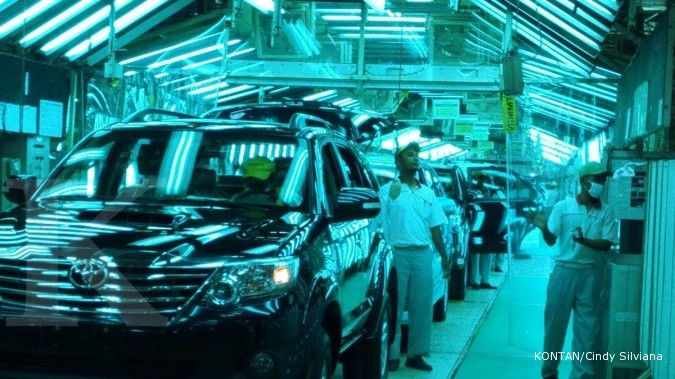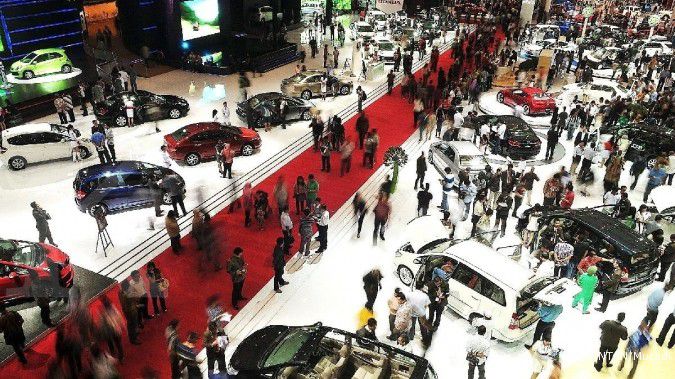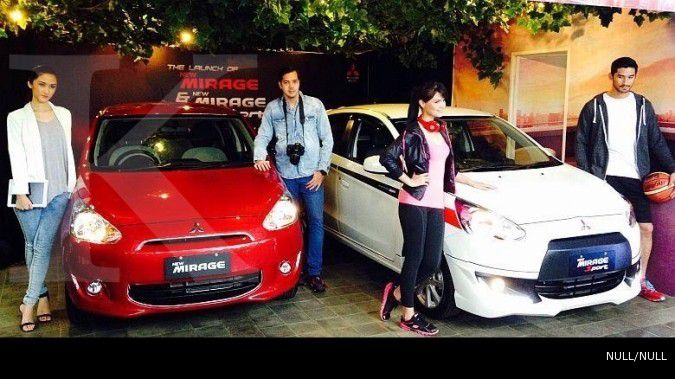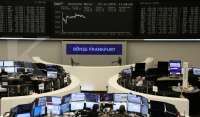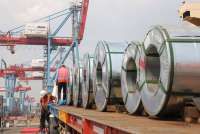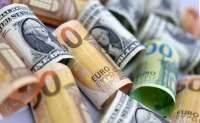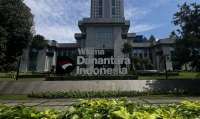JAKARTA. The automotive industry remains conservative in its outlook for this year, as car sales remained stagnant from 2013 to 2014.
The Association of Indonesian Automotive Manufacturers (Gaikindo) will stick to its annual sales projection of 1.2 million cars this year, according to a senior member.
Gaikindo secretary-general Noegardjito said that car sales last year were slightly down due to a number of factors, including the fuel-price hikes in November. He said that it had pushed prospective buyers to postpone their purchases until the new year.
Gaikindo data showed that total annual sales of motorized vehicles dropped slightly from 1.229 million in 2013 to 1.208 million in 2014. Even so, the industry managed to achieve its annual target of 1.2 million units for a second year running.
The Astra group accumulated 614,169 in car sales, capturing 51 percent of the market in 2014, or two percentage points less than in 2013. Honda placed second with 159,147 vehicles, followed closely by Suzuki and Mitsubishi with 154,923 and 141,962, respectively.
Noegardjito said sales growth would depend on good economic growth, low inflation and reasonable Bank Indonesia (BI) interest rates. “Out of all the factors, the BI rate played the biggest role, as it affected interest rates of the other banks, however slightly,” he told The Jakarta Post on Monday.
According to him, over 60 percent of Indonesians purchase their vehicles with credit, which means BI’s interest rates have a direct impact on car sales.
Noegardjito said that good economic growth was not enough to boost car sales. It had to be supported by a loosening of the central bank’s monetary stance.
“If the economy shows good growth but the BI rate stays high, purchasing power remains low,” he explained, adding that he hoped interest rates would come down to the level of two years ago, at around 5 to 6 percent.
BI kept its key interest rate unchanged for the second consecutive month at 7.75 percent on Thursday despite signs of a decline in inflationary pressure following a sharp drop in oil prices.
The central bank deemed the rate was still in line with its inflation and current account deficit targets, and anticipated that this year’s inflation would fall 4 to 6 percent.
Meanwhile, PT Suzuki Indomobil sales director Davy Tuilan also acknowledged that businesses could benefit from a BI rate of under 7.5 percent. “The current rate is too close to 8 percent, signaling a tightening of the monetary policy. This has driven businesses to act more cautiously,” Davy told the Post on Monday.
“The market is currently unrateable.”
He said that it was still too early to determine a proper industry outlook for 2015, with market analyses still fluctuating from the good to the bad ends of the spectrum. “I think that we can start making assumptions after March, but before that we’ll just wait and see,” Davy said over the phone.
As a result, he said that Suzuki’s target this year would be to capture a 14-percent industry-wide market share, regardless of the volume.
According to Gaikindo data, Suzuki’s wholesales stood at 154,923 cars last year, compared to 164,004 in 2013, while its retail sales rose slightly from 159,000 in 2013 to 160,000 last year, the sales director said.
Davy said the new government was expected to stimulate new investments and maintain economic stability, as well as bring the volatile rupiah to a more stable level.
According to him, the cost of assembling completely knocked-down (CKD) and completely built-up (CBU) vehicles is highly dependent on a stable currency. “It [currency volatility] makes it harder for us to measure production costs and profits,” he explained.
The automotive industry in Indonesia is currently facing challenges of overcapacity due to a number of facility upgrades initiated by authorized agent, sole distributors (ATPM) during the 2013-2014 period, he said. (Tama Salim)
Automakers to keep sales target at 1.2 million
January 20, 2015, 10.55 AM
/2015/01/12/1090208550p.jpg)
ILUSTRASI. Rencana ekspansi tersebut bagian dari diversifikasi bisnis agar tidak fokus di China. REUTERS/Tyrone Siu/File Photo
Source: The Jakarta Post
| Editor: Hendra Gunawan
Latest News
-
October 04, 2025, 04.22 PM
Aprilia's Bezzecchi Breaks Lap Record to Clinch Pole at Indonesian MotoGP
-
October 04, 2025, 07.04 AM
GLOBAL MARKETS-No Payrolls, No Problem as Wall Street Extends Run of Highs
-
October 03, 2025, 07.21 PM
Indonesia's Shrimp Industry Suffers After Radioactive Case, Association Says
-
October 03, 2025, 06.04 PM
Indonesia Confiscates 42,000 Tons of Tin Sands Linked to Corruption Case
-
October 03, 2025, 03.47 PM
Indonesia Urges EU to Remove Duties on Stainless Steel Products After WTO Ruling
-
October 03, 2025, 10.45 AM
Indonesia Starts Construction of 92 Megawatt Floating Solar Plant
-
October 03, 2025, 05.40 AM
Forex Calendar (Oct 3, 2025): Packed with Global PMI Data and Central Bank Comments
-
October 02, 2025, 04.43 PM
Danantara to Deploy $10 Billion in First Three Months, Eyes Global Push, CIO Says
-
October 02, 2025, 05.37 AM
GLOBAL MARKETS-Stocks Mixed, Gold Hits Record as US Government Shuts Down
